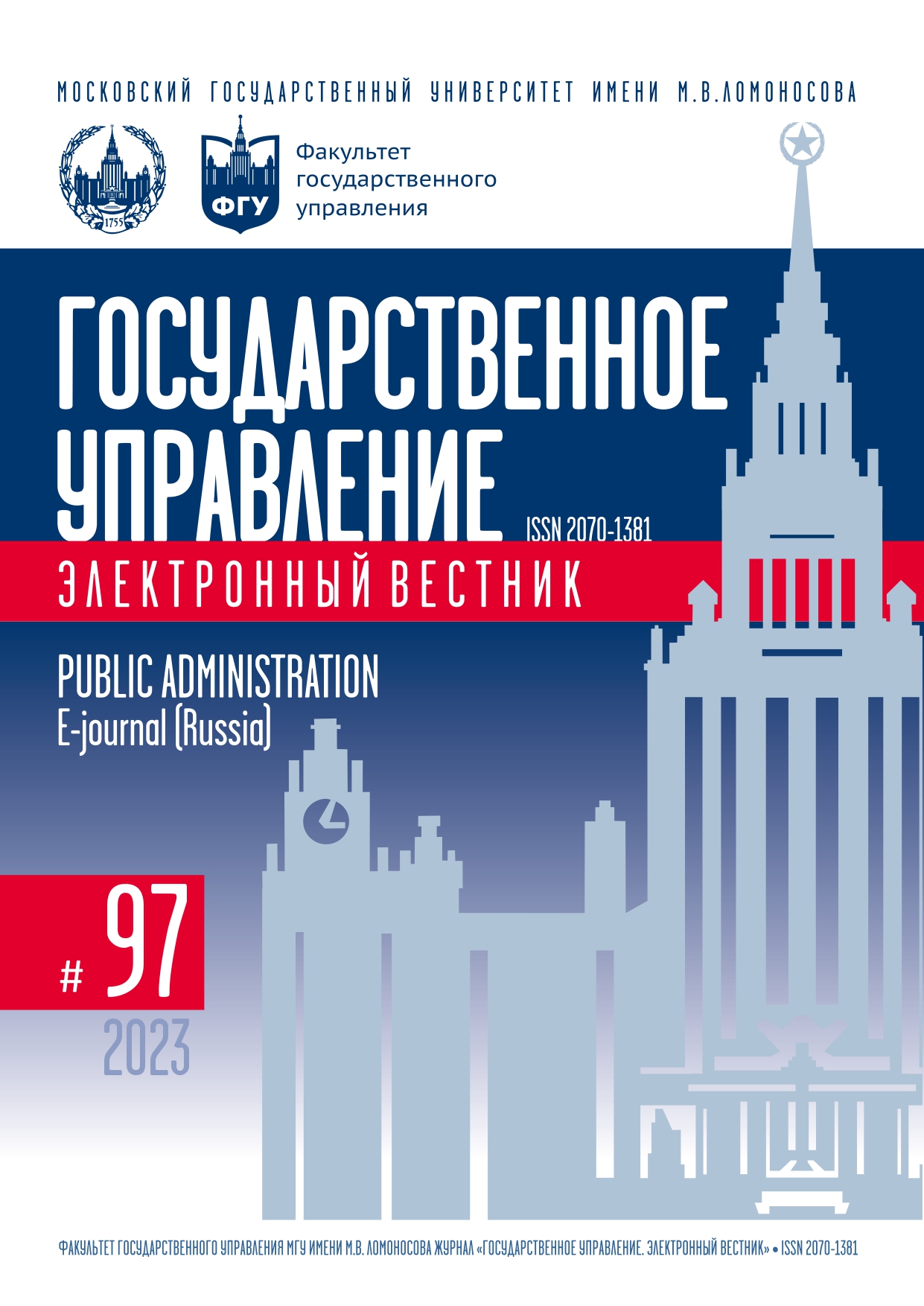Managing Agglomeration Processes in the Development of Suburbanized Territories: A Case of Irkutsk Region
Keywords:
Agglomeration, , subagglomeration processes, territory management, urban planning, corridor development model, polycentricityAbstract
In the present paper, the subagglomeration processes taking place in the Irkutsk region are comprehensively studied. Special emphasis is focused on the suburbanization issue, uncontrolled sprawl of suburban areas of regional centers and its consequences for demographic, economic and social development in the absence of competent management. The analysis of the world experience in the field of agglomeration management allows the most prospective models of territory management to be selected and prioritized. A detailed study of the growth and development of the Irkutsk agglomeration enables to formalize a new phenomenon, which can be termed as subagglomeration. The latter is formed at a distance from the city (that is it is not a suburb), but nevertheless features daily pendulum migrations to the core of the agglomeration, in which it is included. This work was greatly influenced by the experience and practices developed within the framework of the Moscow Urban Forum 2017, the Center for Urban Studies of the Skolkovo Business School, the analytical report “Sprawl Planning” of the Faculty of Urban and Regional Development of the A.A. Vysokovsky Higher School of Urban Planning, and works of K.V. Grigorichev devoted to the Irkutsk suburbanization. This background permits to formulate a hypothesis that high-quality planning, which determines the dynamics and development scenario of the agglomeration (regardless of the management model employed, more directive or more contractual) directly depends on the quality of synchronization of strategic and project documentation, and the cardinal goal of the agglomeration is the centralization of its management and resources. As a result, a management model for the Khomutovo-Urik subagglomeration has been developed. This model allows the effective integration of well-known tools for management of the sprawl to address the issues related to uncontrolled growth of suburban areas.
References
Астафьев С.А. Проблемы субурбанизированных территорий Иркутской агломерации, на примере Хомутовского муниципального образования // Baikal Research Journal. 2022. Т. 13. № 2. DOI: 10.17150/2411-6262.2022.13(2).16
Григоричев К.В. Воображенное сообщество: Конструирование локальности в неинституализированном пространстве пригорода // Лабиринт. Журнал социально-гуманитарных исследований. 2015. № 1(417). С. 46–56.
Григоричев К.В. Многообразие пригорода: субурбанизация в сибирском регионе (случай Иркутска) // Городские исследования и практики. 2016. Т. 1. № 2. С. 7–23. DOI: 10.17323/usp1220167-23
Григоричев К.В. Субрегиональные миграции и формирование пригородов сибирского города // Мир Большого Алтая. 2017. Т. 3. № 1. С. 31–42.
Каменева О.В. Этапы развития агломераций и преимущества агломерационного устройства территории населенных пунктов // Молодой ученый. 2022. № 11(406). С. 102–105.
Ковалевская Н.Ю. Агломерация как форма привлечения инвестиций в проекты развития территорий // Baikal Research Journal. 2022. Т. 13. № 3. DOI: 10.17150/2411-6262.2022.13(3).26
Косарева Н.Б., Полиди Т.Д., Пузанов А.С. Экономическая урбанизация. М.: Фонд «Институт экономики города», 2018.
Матвеева М.В., Пешков А.В., Безруких О.А. Городская агломерация: трансформация экономического пространства на основе концепции устойчивого развития территориальной системы земельных ресурсов // Baikal Research Journal. 2022. Т. 13. № 1.
DOI: 10.17150/2411-6262.2022.13(1).14
Смирнягин Л.В. Агломерация: за и против. Нуждается ли процесс, типичный для урбанизированных развитых стран, в искусственном форсировании // Муниципальная власть. 2015. № 1. С. 38–43.
Флорида Р. Большая перезагрузка. Как кризис изменит наш образ жизни и труда. М.: Издательский дом «Классика-XXI», 2012.
Эпоха агломераций. Городская экономика, пространство и политика в новом пространстве / под ред. А. Кальгаева. М.: Альпина нон-фикшн, 2018.
Logan J.R., Molotch H.L. Urban Fortunes: The Political Economy of Place. Los Angeles: University of California Press, 1987.
Malpezzi S. Housing Prices, Externalities, and Regulation in U.S. Metropolitan Areas // Journal of Housing Research. 1996. Vol. 7. Is. 2. P. 209‒241.
Osborne D., Gaebler T. Reinventing Government. New York: Plume Book, 1993.
Rhodes R.A.W. Understanding Governance: Policy Networks, Governance, Reflexivity and Accountability. Philadelphia, US: Open University, 1997.
Quigley J. M., Rosenthal L. A. The Effects of Land Use Regulation on the Price of Housing: What do We Know? What Can We Learn? // Cityscape: A Journal of Policy Development and Research. 2005. Vol. 8. Is. 1. P. 69–137.
Thompson D. Suburban Sprawl: Exposing Hidden Costs, Identifying Innovations. Ottawa: University of Ottawa, 2013.

